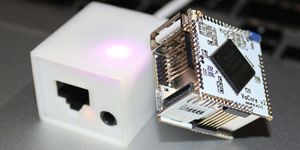Full article
An Ingenious New Process Could Make Computers 2x Faster—Without a Hardware Upgrade
This lightning-quick tech may redefine efficiency.
BY DARREN ORFPUBLISHED: MAR 14, 2024 8:00 AM EST
SAVE ARTICLE
John Lamb//Getty Images
- A new processing technique could double the speed of existing computer performance while also improving efficiency during the heaviest of workloads, according to a new study.
- The software algorithm, leveraging a technique known as simultaneous and heterogeneous multithreading (SHMT), uses multiple processing units and AI accelerators to avoid computational bottlenecks.
- This SHMT process isn’t coming to a device near you quite yet—the idea is still in the testing phase to see if it’s worth implementing.
When Apple, Google, or Microsoft announce some fancy new smartphone or laptop, it’s replete with a bevy of nice but undeniably small improvements—a slightly better processor, a few more megapixels, and teensy bit more battery life. However, if one of those gotta-have-it gadgets boasted double the speed using only half the power? Well, that’s a tech advancement worth the (inevitable) multi-million dollar ad campaign that follows.
A new processing breakthrough promises those very computational gains via a simple software algorithm. The idea is called “simultaneous and heterogeneous multithreading” (SHMT), and its an advanced computational technique that essentially utilizes the various processors—including graphics processing units (GPUs), central processing units (CPUs), and even the relatively nascent hardware accelerators for AI (known as tensor processing units, or TPUs)—on your smartphone or laptop in a more coordinated fashion.
RELATED STORY
This concept—the research into which is being led by associate professor at the University of California Riverside Hung-Wei Tseng—could potentially speed up existing hardware by 1.96 times while utilizing 51 percent less energy. Tseng presented his work at the 56th Annual IEEE/ACM International Symposium on Microarchitecture held in October in Toronto, Canada, in late 2023.
MORE FROM POPULAR MECHANICS
How Scissors Are Made From Scrap Metal
Play Video

“The landscape of modern computers is undoubtedly heterogeneous, as all computing platforms integrate multiple types of processing units and hardware accelerators,” the paper reads. “However, the entrenched programming models focus on using only the most efficient processing units for each code region, underutilizing the processing power within heterogeneous computers.”
Computers use different processing units to handle different tasks more efficiently. But this can sometimes lead to inefficiency, as bottlenecks occur when data travels among different units. Some devices already use a technique known as simultaneous multithreading, which allows processors to run additional instructions on two separate hardware threads. Tseng’s research expands on this idea to include multithreading across different (or heterogenous) processing units.
To test this concept, the researchers used an ARM Cortex-A57 CPU, an Nvidia GPU, and a Google Edge TPU. The team then relied on a quality-aware work-stealing (QAWS) scheduler, according to the website Tom’s Hardware, that allowed the SMHT experiment to avoid “high error rates and to balance the workload evenly among all components.” This means tasks were reassigned to other processors if performance failed to meet expectations.
RELATED STORY
While the SMHT performed twice as fast with half the power, those figures were only calculated under the hardest workloads. Lower workloads exhibited smaller gains, as there was little opportunity for processing bottlenecks.
Right now, this speed-enhancing, power-saving software algorithm is in its very early stages, so it likely isn’t coming your way as an update in the app store just yet. For one, software has to be rewritten to take advantage of the technique—which is a lot of work—and for another, the lab designed software doesn’t yet meet the rigorous standards required by quality assurance departments.
But simultaneous and heterogenous multithreading proves that even our modern processors have some room for improvement. And it’s unlikely—especially in the era of AI smartphones and laptops—that tech companies will leave that extra computer power on the table for long.

 This Linux Computer Is as Powerful as It Is Tiny
This Linux Computer Is as Powerful as It Is Tiny Scientists Found a Fancy New Way to Create Qubits
Scientists Found a Fancy New Way to Create Qubits